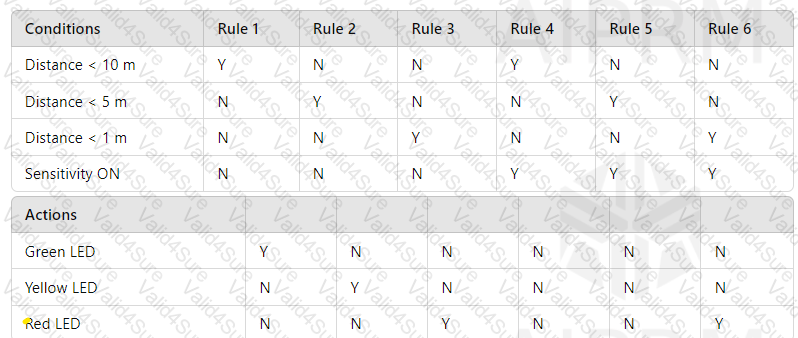CTFL4 Exam Dumps - ISTQB Certified Tester Foundation Level CTFL 4.0 Exam
Which of the following s the most correct statement about state testing techniques?
Consider the following table, which contains information about test cases from the test management system:

Which ONE of the following optionsorganizes the test cases based on the statement coverage strategy, while considering practical constraints?
You are testing a system that is used in motor vehicles to warn the driver of an obstacle when re-versing. Output is provided by a series of LED lights (green, yellow, and red), each illuminated based on clearly defined conditions.
The following summary describes the functionality:
•Object within 10 metres, green LED lit.
•Object within 5 metres, yellow LED lit.
•Object within 1 metre, red LED lit.
•Setting sensitivity mode to "ON" will result in only the red LED being lit when the object is within 1 metre.
The following decision table describes the rules associated with the functioning of this proximity warning system:

Which intended functionality is tested by Rule 5 in the decision table?